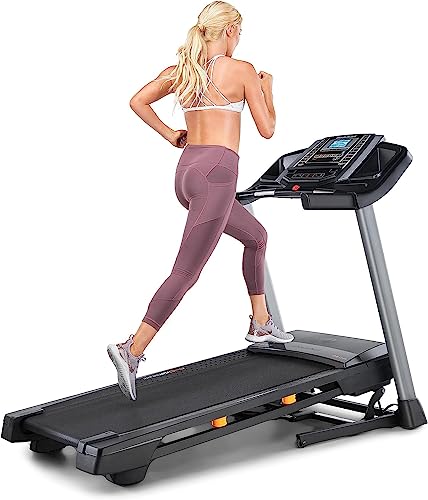사용후기
사용후기
You'll Never Guess This Treadmill Incline Workout's Tricks
페이지 정보
작성자 Lauri 작성일24-06-25 14:23 조회11회 댓글0건본문
 How to Use a Treadmill Incline Workout
How to Use a Treadmill Incline WorkoutMany treadmills allow you to vary the incline of your workout. Uphill walking at a steep angle burns more calories than walking on the flat.
This workout is also low-impact, and can be an excellent alternative to running for people who suffer from joint pain. It can be completed at a variety of speeds and is easy to modify based on fitness goals.
The right inclined
No matter if you're a beginner on a treadmill or an experienced veteran the incline training method gives you numerous opportunities to spice up your cardiovascular workouts. Incorporating incline on your treadmill can simulate the feeling of running outdoors without all the pounding of joints. You'll increase your calories burned, build endurance, strengthen your lower leg muscles and increase your heartbeat by increasing the intensity of your walks or runs. It is easy to include incline training into your cardio workouts as part of a HIIT or steady-state exercise.
When walking at an incline, be sure you take longer steps and keep your arms moving. In general, you should tighten your arms when you are on an incline of 15%, and relax your arms at a 1% incline. This will improve your posture and help prevent any injuries while walking up hills. Be sure not to lean forward too much when walking up steeper hills, as it can strain your back.
If you're new to treadmill incline exercises it's recommended to begin at a low gradient. Before you begin any incline, it's best to walk for 30 minutes at a moderate pace on a flat surface. This will help prevent injuries and allow for gradual improvement in fitness.
Most treadmills allow you to set a certain slope while you're exercising. Some treadmills do not permit users to change the incline. You'll have to stop your workout to manually adjust the deck to the desired setting. This can be a pain particularly if you're doing interval training in which the incline changes every few minutes.
When you're participating in a HIIT session, it's helpful to know the approximate percentage of your maximum heart rate (HRmax). This will tell you when you've reached your desired intensity and when it's time to increase the incline or reduce the speed. If you're doing steady state exercise it's important to monitor your heart rate throughout the exercise and keep it between 80-90% of your maximum heart rate.
Warming up
Treadmill exercises are an excellent method to burn calories, but adding an incline boosts the intensity and offers additional benefits such as functional strength training. If you're new to running or walking on an inclined surface it is crucial to warm up prior the intensity of your treadmill exercise. This will lower the risk of injury, and prepare your muscles for the intense work ahead.
If you're just beginning and are just beginning your exercise, two minutes of fast walking is the best method to start your warm-up. Once you've warmed-up, you can start by walking for 4 to 5 minutes. You can continue to warm up your legs by adding two minutes of strenuous walking after your run. You can then progress to a full-body exercise like one that incorporates bodyweight exercises, such as squats or walking lunges.
A full-body workout is a great choice because it targets multiple muscle groups and helps to build an even stronger core. It's also a great way to increase your heart rate without pushing yourself too hard on the treadmill. If you're not sure the best workout to do, ask your fitness instructor for assistance.
Incorporating an incline into your treadmill workout will provide the most realistic terrain for your exercise and also boost your VO2 max or the maximum amount of oxygen consumed. Walking on an inclined path will help your muscles learn to walk over real-world terrain and can reduce the impact on your knees.
Treadmill incline exercises can also target various muscle groups in the legs and are excellent for sculpting your lower body. Walking at an angle can improve your range of movement in your arms and strengthen your shoulders and chest.
A high-intensity treadmill workout is a great option for beginners and is suitable for those who wish to challenge themselves and achieve higher heart rates without the pressure of pushing their bodies to the limit. It is essential to track your heart rate during a vigorous treadmill workout, and make sure to stretch afterwards. Stretching will help prevent tight muscles and will help to recover your body from intense exercise.
Intervals
If you are using a treadmill for an exercise with an incline, you need to vary the intensity by using intervals. Interval training is a tried and tested method to burn calories and increase muscle mass faster. It involves alternating high-intensity exercise with periods of less intensity exercises, like running or a short walk. This type of workout can help you increase your VO2 max which is the highest amount of oxygen that your body can absorb during exercise.
To get the most benefit of your treadmill incline workout it is recommended to incorporate a mix of walking and jogging. This will ensure that your body is able to recover between the intervals of high intensity and prevent injuries. Also, ensure that you warm up prior to starting the intervals.
Determine your desired heart rate prior to designing an incline treadmill exercise. This should be around 80-90% of your client's maximum heart rate. You will then be able to decide on which speed and incline to use for each interval.
You can create your own interval programs or utilize the built-in programs on your compact treadmill incline. For instance, you can begin with a 3-minute interval that is set at a comfortable jog for the first set, and then gradually increase the incline each time. Once you reach your target heart rate, you can run comfortably for the remainder of the workout.
For the next set, you should walk at an angle of 10 percent, and run for three to six times. Then, you'll be able to return to jogging at a moderate pace for one minute of recovery. Repeat this exercise for a total of five to eight intervals.
If you aren't comfortable using a treadmill, try a running or walking incline workout. This will test your balance and work your leg muscles harder than a treadmill. It is important to ensure your knees and ankles are free of any injuries prior to beginning this type of exercise.
You can also incorporate a variety of dumbbell exercises in your incline workouts to add more muscle-building activity. For example, you can perform lateral raises as well as dumbbell rows during your rest intervals to make your workout more challenging.
Recovery
Most treadmills offer an incline function that allows you to simulate running and walking uphill. You can adjust the speed of your treadmill to make it more challenging or add intervals that have more intensity. This type of exercise is ideal for those who wish to boost their aerobic fitness and burn calories without worrying about the impact on their joints.
In addition to burning more calories, incline walking also engages various muscles throughout the body. This may help strengthen the posterior chain which includes the hamstrings and glutes. Inline treadmill walking also strengthens the muscles that make up the calves, which includes the smaller tibialis and peroneal anterior muscles. This can improve strength and flexibility and is a great alternative to jogging if aren't comfortable with high-impact exercises.
If you're new to walking on incline, begin with a low incline and gradually increase it over time. This will aid in avoiding joint pain and reach your fitness goals quicker. It's important to listen to your body and stop exercising if you feel any discomfort or pain.
Warm up with gentle upward or level walking for five minutes to benefit the most from your incline training. Keep an eye on your heart rate during the workout.
After your first incline interval, reduce the gradient to 0% and walk at a steady pace for 3-4 minutes. This recovery phase helps you return your heart rate to normal and prepares your body for the next step.
 Repeat this process for the duration of your incline workout. Try to keep the ratio of work-to-rest as close as 1:1 as is possible. This will help you increase the intensity of your workout and achieve your desired results in a shorter amount of time. Also, be sure to stretch after your workout to prevent tight muscles and flexibility issues.
Repeat this process for the duration of your incline workout. Try to keep the ratio of work-to-rest as close as 1:1 as is possible. This will help you increase the intensity of your workout and achieve your desired results in a shorter amount of time. Also, be sure to stretch after your workout to prevent tight muscles and flexibility issues.